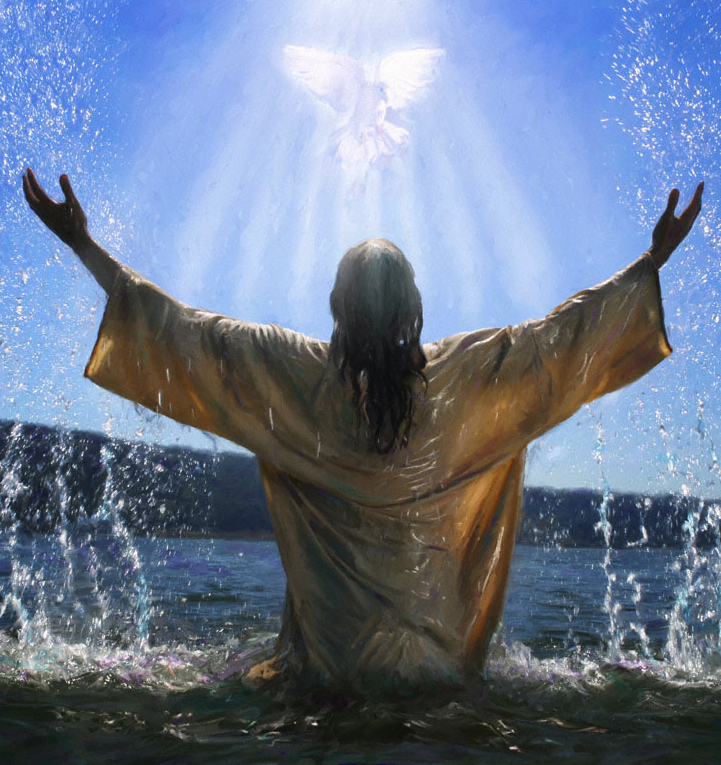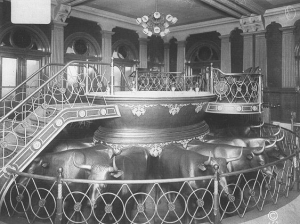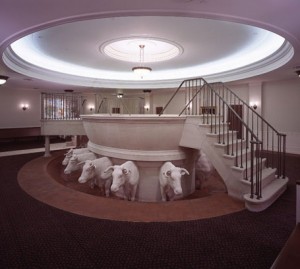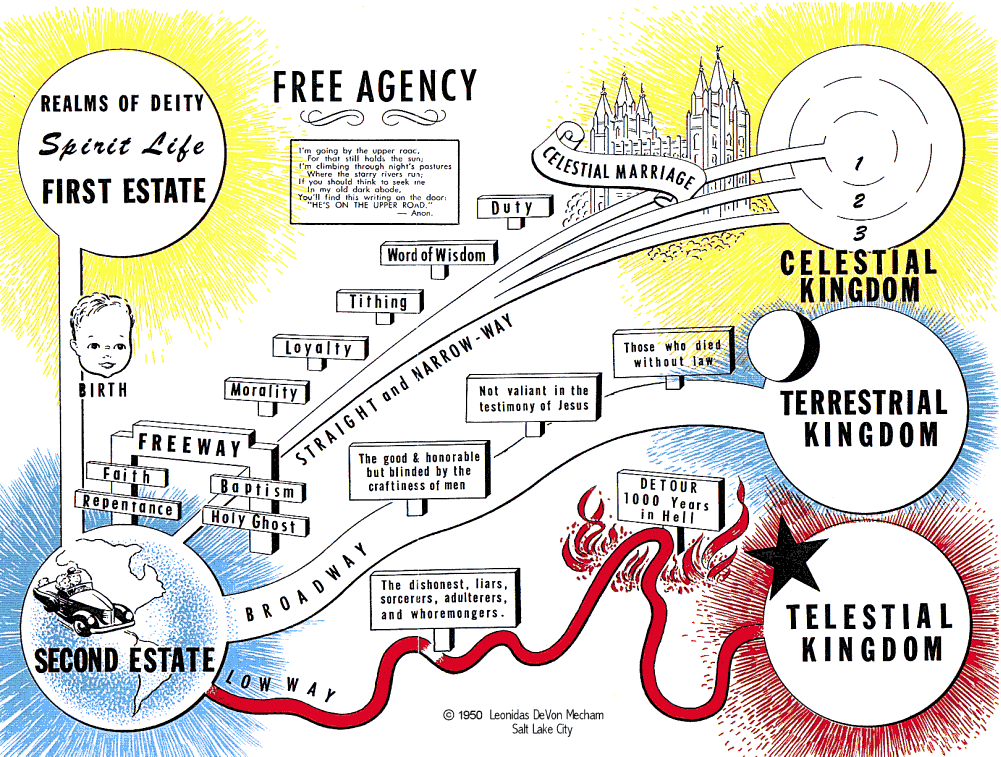
CNN: The Church of Jesus Christ of Latter-day Saints has apologized for “a serious breach of protocol” in which the parents of the late Nazi hunter Simon Wiesenthal were posthumously baptized as Mormons. The church also acknowledged that three relatives of Holocaust survivor Elie Wiesel were entered into the genealogy database, though not referred for baptism. Asher Wiesenthal and Rosa Rapp were baptised in proxy ceremonies in temples in Utah and Arizona, according to the database records discovered by researcher Helen Radkey in Salt Lake City. The Wiesenthal baptisms violated a 1995 pact in which the church agreed to stop baptizing Jewish Holocaust victims. MORE
WASHINGTON POST: Mormons are encouraged to baptize at least four generations of forebears to seal the family together in the afterlife. So the LDS church has built the world’s most extensive genealogical library in Salt Lake City with 700 employees and more than 2 billion names. Baptisms need bodies, so young Mormon men and women dressed in white robes stand in for the departed souls in temple ceremonies worldwide. Mormons youths consider it an honor to be immersed in baptismal founts while the names of the deceased are recited. LDS leaders emphasize that the spirits of the dead must accept the baptism — it cannot be involuntarily imposed. And Mormons are instructed to only baptize family members, particularly after Jewish genealogists discovered in the 1990s that 380,000 Holocaust survivors had been vicariously baptized. In response, the church imposed safeguards and spent $500,000 removing Jewish names from its baptismal registries. But with 13 million Mormons worldwide, the church insists that it cannot control “pranksters or careless persons” who submit Jewish names or famous people such as President Obama’s late mother, Stanley Anne Dunham. And the church considers the ritual too essential to forswear. MORE
RELATED: Baptism for the dead, vicarious baptism or proxy baptism today commonly refers to the religious practice of baptizing a living person on the  behalf of one who is dead; with the living person receiving the ordinance of baptism, for the dead person. Baptism for the dead is today best known as a doctrine of the Latter Day Saint movement, where it has been practiced since 1840. It is currently practiced by The Church of Jesus Christ of Latter-day Saints (LDS Church), where it is performed only in dedicated temples, as well as in several (but not all) other current factions of the Latter Day Saint movement. Those who practice this rite view baptism as an indispensable requirement to enter the Kingdom of God, and thus practice Baptism for the Dead to give those who have died without ever having had the opportunity to receive baptism the opportunity to receive it by proxy if they wish. MORE
behalf of one who is dead; with the living person receiving the ordinance of baptism, for the dead person. Baptism for the dead is today best known as a doctrine of the Latter Day Saint movement, where it has been practiced since 1840. It is currently practiced by The Church of Jesus Christ of Latter-day Saints (LDS Church), where it is performed only in dedicated temples, as well as in several (but not all) other current factions of the Latter Day Saint movement. Those who practice this rite view baptism as an indispensable requirement to enter the Kingdom of God, and thus practice Baptism for the Dead to give those who have died without ever having had the opportunity to receive baptism the opportunity to receive it by proxy if they wish. MORE
RELATED: The baptismal font is situated in the center of the basement room, under the main hall of the Temple; it is constructed of pine timber, and put together of staves tongued and grooved, oval shaped, sixteen feet long east and west, and twelve feet wide, seven feet high from the foundation, the basin four feet deep, the moulding of the cap and base are formed of beautiful carved work in antique style. … The font stands upon twelve oxen, four on each side, and two at each end, their heads, shoulders, and fore legs projecting out from under the font; they are carved out of pine plank, glued together, and copied after the most beautiful five-year-old steer that could be found in the country,… (History of the Church, vol. 4, p. 446) The baptismal fonts in the LDS temples are only used for proxy baptisms of the dead. Baptisms of the living are preformed in the local Stake Center and would resemble other church’s fonts. MORE
RELATED: The LDS Church holds that deceased persons who have not accepted or had the opportunity to accept the gospel of Christ in this life will have the opportunity to accept the gospel in the afterlife. As all must follow Jesus Christ, they must also receive all the ordinances that a living person is expected to receive, including baptism. For this reason, members of the LDS Church are encouraged to research their genealogy. This research is then used as the basis for Church performing temple ordinances for as many deceased persons as possible. As a part of these efforts, Mormons have performed temple ordinances on behalf of a number of high profile people. Of particular interest are: the Founding Fathers of the U.S., Presidents of the U.S., Pope John Paul II, John Wesley, Christopher Columbus, Adolf Hitler,[36] and others. While members of The Church of Jesus Christ of Latter-day Saints consider it a great service to perform vicarious ordinances for the deceased, some non-members have taken offense. To be sensitive to the issue of proxy baptizing for non-Mormons that are not related to Church members, the Church in recent years has published a general policy of performing temple ordinances only for direct ancestors of Church members. For example, the Church is in the process of removing sensitive names (such as Jewish Holocaust victims) from its International Genealogical Index (IGI) MORE
 RELATED: In May 2009, it was discovered that President Barack Obama’s mother, Stanley Ann Dunham, “who died in 1995, was baptized posthumously into The Church of Jesus Christ of Latter-Day [sic] Saints last year during her son’s campaign. … It is not yet clear whether Obama is troubled by the practice. The White House declined to comment Tuesday [May 5, 2009].”[56] The June 4, 2008 baptism was performed in the Provo Utah Temple, and a week later the ritual of endowment was performed on behalf of Dunham. LDS Church spokesman Scott Trotter confirmed that someone did perform a proxy baptism for Dunham, but said it was “counter to [LDS] Church policy for a church member to submit names for baptism for persons to whom they are not related.”MORE
RELATED: In May 2009, it was discovered that President Barack Obama’s mother, Stanley Ann Dunham, “who died in 1995, was baptized posthumously into The Church of Jesus Christ of Latter-Day [sic] Saints last year during her son’s campaign. … It is not yet clear whether Obama is troubled by the practice. The White House declined to comment Tuesday [May 5, 2009].”[56] The June 4, 2008 baptism was performed in the Provo Utah Temple, and a week later the ritual of endowment was performed on behalf of Dunham. LDS Church spokesman Scott Trotter confirmed that someone did perform a proxy baptism for Dunham, but said it was “counter to [LDS] Church policy for a church member to submit names for baptism for persons to whom they are not related.”MORE
RELATED: Mormon doctrine teaches that the god of this universe was once just a man on another planet, just as human beings are on this planet. By following the beliefs of the Mormon religion, after his death he obtained salvation (was resurrected from the dead) and achieved the highest exaltation (eternal life) and qualified, by the quality of his works during his human life, to be granted the status of a god. As a result, he obtained his own planet and made it his home, along with his many wives. Since a Mormon god has a physical body and is not a spirit, he, along with his many wives can procreate and produce many children to populate their heavenly planet. Although the father in heaven and his wives have physical bodies, the children they produce are spiritual in nature. During the course of time, they produce literally billions of spiritual children who are the same size as human beings on earth. MORE

